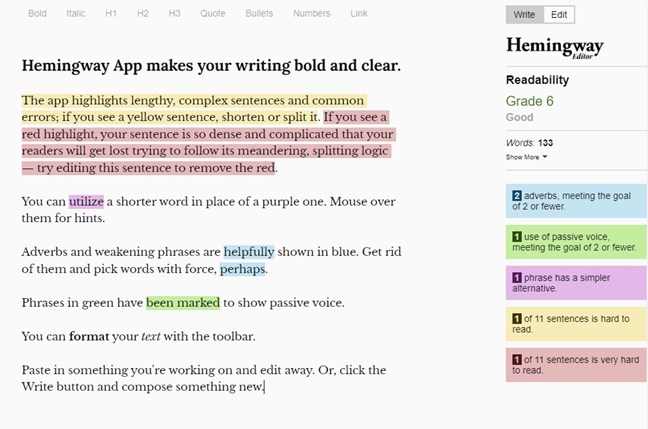The power of website content for accounting firms

Want to get more out of your website content for your accountancy firm? In this article we explore the different types of content, how to create it, and how to structure it.
Following these tips will allow you to delight your target audience and, hopefully, generate more leads from current and potential clients.
Key Highlights:
- Written content is usually overlooked during the design of a website in favour for general design, colours and images.
- Having content that focuses on your audience rather than your business will perform stronger.
- Website content needs to have strong Search Engine Optimisation (SEO), generate new leads and educate prospective clients of your accounting services.
- There are three main types of content on a website: product/service pages, short form content, and long form content.
- People do not read every word on a website like they do for a book or newspaper. Instead, they scan read.
- By understanding the patterns people scan read will allow you to design more effective content for the reader.
- Long form content does perform stronger for SEO and getting more traffic to your website.
On this page:
What does website content mean?
Why is website content important?
What are the different types of website content?
The greatest myth of website content
How to write content for websites
The Contradiction: Why write long pieces of content?
What does website content mean?
But first, what do we mean by website content?
Website content is the way to reach your target audience so they can understand what your business does.
When we talk about website content, it is usually in reference to the text. But it can also include other creative content such as images and video content.
For the purpose of this article though, we will be concentrating on written website content. This is because it is usually the most misunderstood, yet most powerful type of content your can have when executed well.
The most dangerous part of website content, particular the written content, is thinking that you can write anything, and people will read it.
The truth is that written website content is difficult. You have to balance and consider many different things. This includes:
- format and structure of content
- human behaviour
- psychology of language
- business objectives.
All these must be combined to get the most out of your website content.
Why is website content important?
Websites are successful when they lead to conversion actions. For an accountancy firm this could be generate leads from new business, access to client portals, or even existing clients buying new products or services.
For your website audience to complete conversions thought, they need to understand what it is your business is offering.
This is why valuable content is so important.
It communicates to your audience in a way that they understand. And when your audience understands, they're more likely to convert.
This is why the words you use on your website are so important. More so than any image, design or video content you might use. People will not understand what you do without words. Words have power.
But website content must do than just educate your audience.
What does content need to achieve on your website?
There are three main areas your website content needs to cover. Each of these areas has individual benefits for your accounting firm website.
But when these three areas are working in partnership with one another, your website has a great chance of meeting your business and marketing goals.
The best website copy can achieve all three of these areas all at once. It can generate new traffic from SEO, it can educate website users, and it can lead to new clients contacting you.
SEO
SEO is the act of improving the quality of your website. Having a website that is of high quality has a higher chance of showing up in high positions on search engine results pages (such as Google).
To optimise your websites for search engines, you need to understand how their algorithms work. You need to understand what decisions and choices they make when deciding to show a certain website.
One of the factors search engines use to decide upon is how relevant your website is for the searcher.
They do these by looking at the content on your website and whether it matches the words in the search term.
For example, if someone searched 'accountancy firms in Leicester', Google - or other search engines - will look for websites that included the terms 'accountancy firm' and 'Leicester'. The webpages with the most relevant content will then appear in Google's search results.
What does this mean for your website content then?
Essentially, your website content needs to include the search terms you want to appear for.
The better your SEO performance is, the higher chance you have at appearing for the terms you want to appear for. This opens up the opportunity of attracting new clients who have shown an active interest in the services you provide.
Lead Generation
Powerful website content has the ability to convince your potential clients to become paying customers.
It can lead to action from your website visitors. So rather than just visiting your website and then leaving, they visit and reach out.
Because lead generation content is so valuable, lots of research has been conducted into the most powerful trends. Utilising these can strengthen the number of conversions you get.
Tactics include:
- Using action verbs at the beginning of lead generation text.
- Avoiding common phrases like 'click here' or 'read more'.
- Keeping the messaging short and simple.
- Where possible, tie it into something that will delight the audience.
Product & Service education
Not only does your content need to work at improving your SEO performance and lead generation. It also needs to educate your audience about your products and services.
Without this, prospective clients will not know what you do, so you may miss out.
But this is easier said than done.
It's tempting to educate prospective clients by telling them what you do. In fact, that feels like it is the obvious thing you should be doing when educating someone new to your business.
Typically, this can be seen with lots of content that starts with the words 'we' or 'our'. For example, 'our accountants are all trained in the latest tax law'.
Instead, education content needs to be value led. In other words, it needs to tell your target audience what benefits they will get from using your business. This type of content tends to start with 'you' statements instead.
Using the above example, that could turn into 'Have confidence in your finances with our fully trained accountant'.
What are the different types of website content?
There are three main different types of website content. Each has its own purpose as part of your digital marketing strategy.
Understanding these differences and how they can help your accounting firm demonstration your value and expertise is important.
Remember, the content on all these pages, also has to meet the requirements listed above: SEO, Lead Generation and Product education.
Product & Service pages
These are some of your core pages. They need to list out the accounting services and products your business has to offer.
These pages should appear on your homepage or be easily accessed from your main menu.
Product and Service pages must drive home the value you can offer you potential clients. This means utilising sentences and paragraphs that avoid 'we' statements. Instead, focus on the client by using 'you' statement. What will the reader get from using your accounting firm over your competitors? What benefits can you offer that others can't?
To structure a product or service page, you will want to concentrate on:
- Value-led content which explains the benefit to your clients.
- Features of your product or service.
- Advantages that the features of your product or service offers.
- Social proof through reviews and testimonials - ideally from a third-party provider.
- Convincing lead generation that leads to conversions.
Short form content
A blog or a latest news article are typically seen as short form content. Usually, it is part of a wider content marketing strategy where content is shared on social media platforms.
Short form content is used to publish content quickly and reactively. Most often than not, the content has a short, but useful, lifespan. This is to meet a specific task such as drive traffic from social media marketing or email marketing.
Common similarities for short form content include:
- a word count of around 500 words
- covers one topic in surface detail
- to keep existing clients up to date with industry news
- a place to publish press releases.
Long form content
Long form content is centred around a content marketing strategy. The aim of long form content is to generate more traffic and potential customers by increasing SEO performance.
Creating content that is long form is usually a way of building relationships with potential clients through a means of education.
Typically, this type of content is classed as evergreen and has a long lifespan.
On a website, long form content is can be stored under a Resources section. Alternatively, long form content can even be published with other blogs, articles or latest news content.
Common long form content structures include:
- word length of over 2,000 words
- in-depth focus on one topic
- broken up into useful sections
- may offer guidance on how to complete a task
- does not focus on date sensitive topics.
The greatest myth about website content
So far in this article, we have focused on telling you how important written content is for your website. How concentrating on the words you use can make an impact on your conversion rates, SEO and educating your potential customers.
But there is one important, almost contradictory, fact that should be considered when writing website content.
People do not read websites.
It is often thought people read websites the same way they read books or newspapers. This is not true.
Instead, people tend to scan read a page looking for certain words or phrases that is related to their search.
For example, if someone landed on your website looking for local accountancy services, they will be scanning your website trying to find words that matches their expectations. Similarly, if they landed on a long form piece of content about tax codes, they would be scanning that article to find the piece of information that matters to them.
Therefore, it is not necessarily that people do not read websites. It's that they only read the part which is important to their needs.
How do people read websites?
As mentioned earlier, people do not read websites. Instead, they scan read website content.
Therefore, understanding how people scan read a website is just as important as the words you use.
Once you understand how people scan read, you can then craft your content marketing to take advantage of this behavioural trait.
The most common pattern people use when scan reading is called 'The F Pattern'.

This behaviour sees readers start in the top left-hand part of the content. They'll then scan the first sentence or paragraph looking for keywords that sparks their interest.
Then they will skip down the page to repeat this behaviour. Except as they skip down the page, they'll start scanning less and less of the sentence or paragraph. This behaviour continues until they stop scanning further into sentences and paragraphs and only read look at the first word.
How to write content for websites
Once you understand how people read (or rather do not read) content your accountancy firm's website, you can then start using that to your advantage.
There are ways to encourage people to read your website content. This involves structuring your content and pages in a way that aids people in their scan reading.
Formatting text
Correctly formatted text aids people scan reading website content. The purpose is to make content easier on the eye, so it is drawn to interesting points.
Tips for formatting text include:
- short paragraphs of no more than three sentences
- sentence length maximum of 20 words
- large headers every 300-500 words
- using bullet points or lists
- inserting (relevant) images in the content.
First three words
Scan readers do not read the entirety of sentences or paragraphs. Instead, they are looking for keywords based on the information they are seeking.
Try to load the beginning of your sentence or paragraph with the keywords the reader may be seeking out.
For example, instead of 'Looking for information about tax codes?' use 'Tax codes: the information you need'.
This way a scan reader will know in the first three words that the content they are looking for is right there.
Single point per paragraph
Try to keep to a single point per paragraph. A scan reader will be discouraged from reading a big block of text. Therefore, you want to break blocks of text up.
One way to achieve this is by keeping to a single point per paragraph.
Clear, concise language
Many people don't realise the average reading score age in the UK is nine years old. This means most people in the UK, including adults, will struggle to understand content that is too technical.
Therefore, readability is vital for scan readers.
Accountancy firms target audience will differ to the average reading score though. It can be assumed your audience is more likely to have a higher average score. This is because they are likely to be senior people in business.
However, attempts should always be made to make your content as universal as possible.
This is because your content's readability score will also impact your SEO performance. Google, and other search engines, favour content which is accessible to most people.
One way you can be sure your content is easy to understand is by using the Flesch Reading Ease Score. This method calculates how easy your text is to read. It does this by taking into account sentence length and number of syllables used.
From this, it will give you a reading grade. Ideally, you should be aiming for a score of between 60 - 70. This is sometimes presented as grade six or seven.
A Flesch Reading Ease of 60-70 matches the average reading age of a 13-to-15-year-old.
How to check your reading score?
It is very easy to check the reading score of your content. You can use the completely free web tools called Hemingway App.

Simply copy and paste your content directly into the tool and it will give you a readability score.
Hemingway App can also help you identify problem sentences by highlighting them in yellow or red.
Repeat yourself
When you traditionally write a piece of content you may be conscious of repeating the same point more than once.
This is not necessarily a problem when you write for scan readers.
It is unlikely that a reader will read every word, sentence of paragraph you write on your website. Because of this, it is obvious that they may miss a point that was mentioned earlier on.
As a result, be sure to repeat key points multiple times throughout your content.
Value led content
Your content has to provide value for the reader.
In a selfish way, they are on your website because they have a need to be met. If you do not meet that need, they will go elsewhere.
Therefore, try to ensure your content provides value and makes it clear the benefits your service offers.
Content should always be focused on your readers. One way to check for this is doing a 'we' test.
This is an easy test to do. Simply open your content up in word or even load the webpage. You then want to press CTRL + F to open the find box. Type in the word 'we' and make a note of the number of times it appears. Repeat the same process with the word 'our'.
Finally, you want to do the same process for the word 'you'. Ideally, you should have more occasions of 'you' than 'we' or 'our'.
If you have more occasions of 'we' or 'our', then it is likely your content is not going to deliver value to your potential customers. This is because you're focusing on your business rather than your audience.
Try to rephrase any 'we' statements to focus a benefit onto your audience.
A simple way of doing this continuously asking 'why' to any point you want to make. For example:
- 'We are ranked the best accounting firm in Yorkshire' - Why does that matter to the reader?
- 'Because our clients trust us with their businesses' - Why does that matter to the reader?
- 'Because they will join a company that hundreds of other businesses use and trust'
Through this process you can to the benefit for the reader. In this case it could be something like 'join hundreds of other businesses in Yorkshire which trust us with their accountants'.
The Contradiction: Why write long pieces of content?
There is a contradiction mentioned within this article.
- Write longer content marketing pieces, but
- People don't read websites.
This begs the questions; why waste time writing long form pieces of content. Particularly if it is unlikely to be read.
Ultimately, there is one simple reason. It is better for SEO.

Multiple studies have been conducted looking at the correlation of first page rankings on search engines and word count.
It has repeatedly shown that there is some correlation between having a higher word count and ranking high on Google.
But why is it better for your SEO marketing strategy?
Why it is better for SEO
There are a number of reasons why it can be better. All these reasons relate to the algorithm that search engines use to make ranking decisions. These include:
- Greater understanding of content and context - Having more content on a webpage helps the algorithms get a better understanding what it is about.
- Increased positive user behaviour - Factors such as how long someone stays on your webpage matter for SEO. Therefore, the long someone spends scan reading your content, the longer they are on the page.
- Wider search potential - Your content may be written for one particular search term keyword. However, if your content covers many things related to that keyword, then there is the possibility it will rank for other search terms. As a result, you can widen the reach of potential audiences.
- Increased Backlink opportunities - Backlinks are one of the key elements to strong SEO. Simply put, it's the number of other websites linking to your website content. Having a thorough content marketing piece is more likely to generate more backlinks. These backlinks will have the overall effect of improve your entire website's SEO performance.
Final Thoughts
Written content on your website matters. Yet it is widely misunderstood.
This misunderstanding is usually based on assumptions on how people interact and read website content.
The truth is that people do not read websites. Instead as businesses we need to get an understanding of what they are doing. And from that, incorporate a writing style and practice that supports peoples online reading behaviours.
Similarly at the same time, we need to be conscious of how this impacts the overall digital marketing strategy. Your website is a major hub for your digital activity.
Ensuring basic SEO, even if it's just local SEO, is vital for success. Initially this does seem to run in contraction to how people read websites. However, the benefits of reaching a wider audience of potential clients with a content strategy can be a strong business plan strategy.




